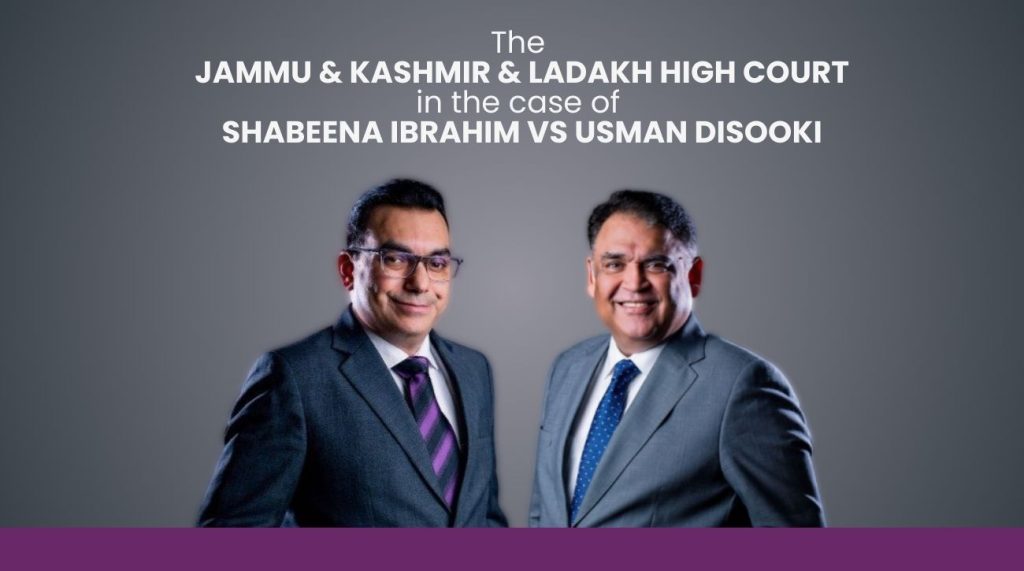Legal Updates (Sept 15 – 20, 2025)
Case Updates:
Since the prosecution of directors requires the company to be arraigned, and their conduct must directly connect to the liability, mere bald assertions of responsibility for day-to-day affairs are insufficient to impose vicarious liability
The Supreme Court in the case of Anil Khandelwal vs Phoenix India [Criminal Appeal Nos. 1159-1160 of 2011] dated August 28, 2025, held that the law does not permit automatic prosecution of directors or officers merely because of their designation or official status. Before any officer of a Bank or a body corporate can be prosecuted for an offence under the IPC on the allegation of having acted on behalf of the institution, it is incumbent upon the complainant to produce unimpeachable material indicating the precise role of the officer in the commission of the alleged offence.
On the issue of non-impleadment of the Bank, the Apex Court observed that the Bank (a body corporate) was not impleaded as an accused, making prosecution of its officers alone impermissible under vicarious liability principles. The prosecution of directors/officers requires the company to be arraigned, and their conduct must directly connect to the liability. Mere bald assertions of responsibility for day-to-day affairs are insufficient.
On the issue of Vicarious Liability under IPC, the Apex Court observed that, unlike special statutes, the IPC does not provide for vicarious liability of officers/directors. Complainants must produce unimpeachable material showing the precise role and active participation/authorization by the officer; and prosecution cannot be based solely on designation.
If parties do not raise a timely objection regarding jurisdiction and allow the proceedings to conclude, and the award is passed without challenge, then the arbitral award cannot be annulled solely on the ground of lack of jurisdiction at the execution stage
While restoring the arbitral award, the Chhattisgarh High Court in the case of Eci-Keystone vs. The Superintending Engineer National Highway Circle, PWD [WP227 No. 691 of 2024] dated July 04, 2025, held that if parties do not raise a timely objection regarding jurisdiction (e.g., at the stage of defense or during arbitral proceedings), and allow the proceedings to conclude and the award to be passed without such challenge, the arbitral award cannot be annulled or treated as a nullity solely on the ground of lack of jurisdiction at a later execution stage, especially when Section 34 proceedings under the Arbitration Act, 1996, have concluded or limitation has run out.
In this case, the respondent failed to file its defence, and the tribunal awarded a large sum to the petitioner in 2022. The respondent raised a jurisdiction objection under the Chhattisgarh Madhyasthan Adhikaran Adhiniyam, 1983, only at the execution stage, which was initially accepted by the Commercial Court.
The High Court pointed out that the respondent, despite being aware of the Chhattisgarh Madhyasthan Adhikaran Adhiniyam, 1983, and after participating in the arbitration proceedings and failing to challenge jurisdiction at all the appropriate earlier stages, could not revive the objection at the execution stage to nullify the arbitral award. The Commercial Court’s approach that lack of jurisdiction can be raised at any stage and that the award was a nullity, is contrary to the law proposed by the Supreme Court in the case of Gayatri Project Limited Versus Madhya Pradesh Road Development Corporation Limited [MANU SC 0700 2025], where it was held that the arbitral award could not have been annulled only on the ground of jurisdiction and where the execution proceedings for awards were pending, such awards be treated to have been rendered under the Chhattisgarh Madhyasthan Adhikaran Adhiniyam, 1983.
Once the Corporate Insolvency Resolution Process is admitted, proceedings are collective in nature, and withdrawal cannot be allowed solely based on bilateral settlements
The NCLAT New Delhi, in the case of Himanshu Singh vs HDFC Bank Limited [Company Appeal (AT) (Insolvency) No. 336 of 2025] dated March 05, 2025, has held that once the Corporate Insolvency Resolution Process (CIRP) is admitted, proceedings are collective in nature and withdrawal cannot be allowed solely based on bilateral settlements. The Tribunal examined the scope of Section 12A of the IBC and Regulation 30A of the CIRP Regulations, 2016, noting that withdrawal applications filed before the constitution of the Committee of Creditors (CoC) must still be adjudicated by the Adjudicating Authority after hearing all concerned parties. Relying on Swiss Ribbons Ltd. v. Union of India (2019) 4 SCC 17, the Tribunal reiterated that once a CIRP is admitted, the proceedings become “in rem,” involving all creditors, not just the applicant creditor and the corporate debtor.
The NCLAT further analyzed the case of Abhishek Singh v. Huhtamaki PPL Ltd. (2023 SCC OnLine SC 349), where the Supreme Court held that Regulation 30A permits withdrawal applications even before the CoC constitution, but such withdrawal does not extinguish the rights of other creditors to pursue independent claims. However, it emphasized that objections by stakeholders may still be relevant depending on the facts. The Tribunal also reiterated that the NCLT cannot be considered a “post office” mechanically stamping withdrawal requests, and unilateral settlements cannot override collective creditor rights under the IBC.
The NCLAT noted that HDFC Bank had filed its claim of ₹4.30 crores on 30.06.2022, within the deadline fixed in the IRP’s public announcement, and along with operational creditor claims, the admitted total stood at ₹4.58 crores, far exceeding the amount settled with SIDBI. Thus, allowing withdrawal only based on SIDBI’s settlement would violate the rights of other creditors who had duly submitted claims. Thus, the Tribunal held that HDFC, being a legitimate stakeholder, had locus standi to oppose withdrawal, and the Adjudicating Authority rightly rejected the Section 12A application. Since in the present case, the majority of claims were unsettled, while only SIDBI’s debt had been resolved, the Tribunal concluded that permitting withdrawal would undermine the collective insolvency framework, and hence, the Adjudicating Authority rightly allowed HDFC’s intervention, rejected the IRP’s withdrawal application, and protected creditors’ rights.
This decision of the NCLAT has been upheld by the Supreme Court.
As per the SARFAESI mandate, the District Magistrate or Chief Metropolitan Magistrate can take possession themselves or authorize an officer to do so; however, the appointed officer cannot sub-delegate this authority further without a statutory mandate
The Debt Recovery Appellate Tribunal (DRAT) in the case of Assistant General Manager, Corporation Bank vs. Yojaka India Pvt Ltd [M. A. (S.A):29/2019] dated August 05, 2025, has held that the possession taken by the Village Assistant was illegal and unauthorized, mandating restoration of possession to the respondent as rightly ordered by the Debts Recovery Tribunal (DRT). The crucial legal point was that possession was taken by a Village Assistant instead of the Tahsildar or Special Tahsildar authorized by the District Magistrate under Section 14 of the SARFAESI Act, even though there was no authorization that the Tahsildar had delegated his powers lawfully to the Village Assistant.
The DRAT cited the established legal maxim delegatus non potest delegare (a delegate cannot further delegate authority) and emphasized that, without express legal or statutory authorization (such as under rules or delegation orders), such sub-delegation is impermissible.
The DRAT emphasized limits on delegation and quoted the decision in the case of Sidhartha Sarawgi v. Board of Trustees for the Port of Kolkata [(2014) 16 SCC 248], which upheld that implementation of ministerial or clerical tasks may be delegated to authorized officers, but delegation requires legal sanction. Thus, the Tribunal stressed that delegation must be within the framework of rules or authorized orders. The Tribunal also drew support from the Bombay High Court in the case of Anand Rathi Global Finance Ltd. v. State of Maharashtra [WP No.218/2022], where it was held that the Tahsildar-cum-Executive Magistrate cannot delegate the task of taking possession to any subordinate officer (e.g., Nayab Tahasildar), reinforcing the non-delegable nature of possession-taking.
The DRAT noted that the District Magistrate or Chief Metropolitan Magistrate, as per the SARFAESI Act mandate, can take possession themselves or authorize an officer to do so. However, the appointed officer (like a Tahsildar) cannot sub-delegate this authority further without a statutory mandate or rules. Thus, the possession taken by the Village Assistant was declared illegal and unauthorized and therefore liable to be set aside.
Once the settlement covered an overwhelming majority, then continuation of CIRP only on account of two dissenting creditors would defeat the purpose of the resolution
The NCLT New Delhi, in the case of Dharampal Singh Rawat vs. Realanchors Developers Private Limited [CP IB NO. 225/(ND)/2022] dated August 13, 2025, has held that Section 12A of the IBC, read with Regulation 30A, permits withdrawal before constitution of the Committee of Creditors (CoC) through the Insolvency Resolution Professional (IRP). Relying on the case of Glas Trust Co. LLC v. Byju Raveendran & Ors. [Civil Appeal No. 9986 of 2024], the Tribunal reiterated that NCLT cannot act as a ‘post office’ and once CIRP is admitted, proceedings are in rem and collective.
The NCLT referred to the case of Himanshu Singh v. HDFC Bank Ltd. [CA (AT)(Ins.) No. 336 of 2025], which subsequently has been upheld by the Supreme Court in the case of Himanshu Singh v. HDFC Bank Ltd. [Civil Appeal No(s). 11109 – 11110 of 2025 decided on August 19, 2025], where it was held that mere objections cannot defeat a Section 12A withdrawal, and therefore observed that the Adjudicating Authority must consider the nature and quantum of claims, and where the majority claims are settled, minority creditors cannot stall withdrawal.
The Tribunal emphasized that post-admission, CIRP is not a matter solely between the applicant creditor and corporate debtor, but concerns all stakeholders. Since in this case the settlement covered an overwhelming majority, the Tribunal held that continuation of CIRP only on account of two dissenting creditors would defeat the purpose of resolution.
Regulatory Updates: SEBI
SEBI Eases Regulations for FPIs in Government Bonds
The Securities and Exchange Board of India (SEBI) vide its Circular No. SEBI/HO/AFD/AFD-PoD-3/P/CIR/2025/127 dated September 10, 2025, has amended its regulations to simplify the compliance process for Foreign Portfolio Investors (FPIs) who invest exclusively in Government Securities (GS-FPIs). This new circular, effective from February 8, 2026, aims to ease regulatory requirements for these specific investors.
The Key changes include exempting GS-FPIs from providing detailed investor group information and from the need to inform SEBI of certain changes in their information, except for material changes. Furthermore, the requirement for a declaration of no changes during the three-year registration renewal period will not apply to GS-FPIs.
The circular also simplifies the KYC review process, aligning its periodicity with the FPI’s bank account KYC cycle as prescribed by the Reserve Bank of India. A new mechanism is also established for FPIs to easily transition between being a regular FPI and a GS-FPI, and vice versa. Depositories, custodians, and designated depository participants are required to update their systems to implement these changes.
Click here to read the original circular
SEBI simplifies Disclosure Document for Portfolio Managers
The Securities and Exchange Board of India (SEBI) vide its Circular No. SEBI/HO/IMD/IMD-RAC-3/P/CIR/2025/125 dated September 09, 2025, has revised the format of the ‘Disclosure Document’ for Portfolio Managers to simplify compliance. Through this circular, the SEBI has removed the previous format specified in Schedule V of the SEBI (Portfolio Managers) Regulations, 2020.
The new structure divides the document into two parts: a ‘Static’ section and a ‘Dynamic’ section. The Static section includes 11 parameters that do not change frequently, such as definitions, risk factors, services offered, and expense details. The Dynamic section covers five parameters that require regular updates, including client representation, financial performance, and audit observations.
A key procedural change is that whenever information is updated, only the specific pages containing the changes need to be certified by an independent Chartered Accountant and the Portfolio Manager’s Principal Officer. These updated pages must be sent to clients, uploaded to the Portfolio Manager’s website, and filed with SEBI within seven working days of the change.
Click here to read the original circular
Framework for AIFs to make co-investment within the AIF structure under SEBI
The Securities and Exchange Board of India (SEBI) vide its Circular No. SEBI/HO/AFD/AFD-POD-1/P/CIR/2025/126 dated September 09, 2025, has introduced a framework for Alternative Investment Funds (AIFs) to provide co-investment opportunities within their structure under the SEBI (AIF) Regulations, 2012. The amendment allows Category I and II AIFs to launch co-investment schemes (CIV schemes) for accredited investors, in addition to the existing co-investment route through Portfolio Managers under SEBI (Portfolio Managers) Regulations, 2020.
Under this framework, managers of AIFs may facilitate co-investments either via the PMS route or through CIV schemes, with each CIV scheme required to maintain separate bank and demat accounts and have ring-fenced assets. Co-investments by an investor across CIV schemes are capped at three times their contribution in the main AIF scheme, except for certain exempted institutional investors such as sovereign wealth funds and development financial institutions.
Restrictions are placed on ineligible investors, leverage, indirect exposures, and regulatory compliance to ensure alignment with the AIF Regulations. CIV schemes must also adopt governance and operational standards to prevent misuse of the flexibility provided. Expenses and rights in co-investments are to be shared proportionately, while compliance reporting and investor grievance redressal mechanisms are to align with AIF regulatory requirements.
The circular further provides a template for the shelf private placement memorandum (Shelf PPM) for CIV schemes, detailing structure, governance, investment terms, expenses, reporting, conflicts of interest, and risk disclosures. The new framework, effective immediately, is aimed at easing operations for AIFs while safeguarding investor interests and ensuring regulatory oversight.
Click here to read the original circular
SEBI Revised regulatory framework for Angel Funds under AIF Regulations
The Securities and Exchange Board of India (SEBI) vide its Circular No. SEBI/HO/AFD/AFD-POD-1/P/CIR/2025/128 dated September 10, 2025, has revised its framework for Angel Funds, with new regulations taking effect immediately. The key changes require all Angel Funds, both new and existing, to raise capital from accredited investors. Existing funds have until September 8, 2026, to fully comply with this mandate, though they can’t accept new contributions from non-accredited investors after this date.
The new rules also specify that Angel Funds must declare their first close within 12 months of SEBI’s communication, and they no longer need to file separate scheme documents or term sheets with SEBI. Instead, they must maintain internal records of term sheets for each investment.
The revised framework allows for follow-on investments in existing companies, setting a cap of ₹25 crore per company and a one-year lock-in period, which is reduced to six months for third-party sales. Additionally, SEBI has reclassified all Angel Funds as a direct sub-category of Category I AIFs and has updated the requirements for annual audits and performance reporting to benchmarking agencies.
Click here to read the original circular
SEBI streamlines KYC Agencies Registration Surrender
The Securities and Exchange Board of India (SEBI) vide its Circular No. SEBI/HO/MIRSD/PODFATF/P/CIR/2025/123 dated September 05, 2025, has proposed to streamline the process for Know Your Client (KYC) Registration Agencies (KRAs) to surrender their registration.
The framework addresses both voluntary surrenders, stemming from business decisions, and involuntary ones, such as those caused by financial distress or regulatory action. A core requirement is that any surrendering KRA, designated as a ‘Transferor KRA,’ must transfer all client KYC records to a ‘Transferee KRA’ to ensure seamless continuity of critical services for investors.
The circular mandates that all KRAs must establish a board-approved Standard Operating Procedure (SOP) detailing this winding-down process, which includes secure data migration, stakeholder notification, and the settlement of statutory obligations. An Oversight Committee must be formed to monitor the transition.
The circular emphasizes compliance with relevant acts like the Prevention of Money Laundering Framework and the Insolvency and Bankruptcy Code. In cases of involuntary surrender, SEBI reserves the right to appoint a temporary administrator or nominate a Transferee KRA to safeguard market stability and investor interests.
All KRAs are required to make their SOPs publicly available on their websites within 90 days of the circular’s issuance.
Click here to read the original circular



